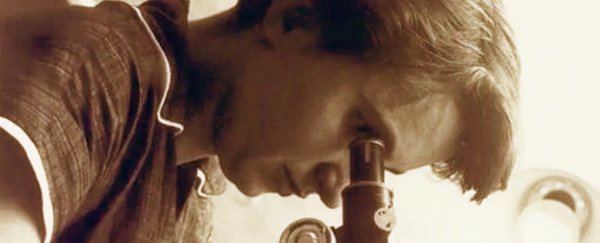Rosalind Franklin was a chemist whose experiments using X-ray diffraction technology played a critical role in the deciphering of DNA's molecular structure.
Though her contributions and conclusions on the polymer's shape and arrangement went largely unrecognised at the time of her death, Franklin's work is today regarded as fundamental to revealing the now famous double helix's form.
Born into an affluent Jewish family in central London a few years after the First World War, Franklin attended one of the first schools in the city to offer girls an education in chemistry and physics.
Her affinity and talent for science earned her a place at Newnham Women's College at Cambridge University, where she applied herself to studying chemistry. This led to work as an assistant research officer at the British Coal Utilisation Research Association. Meanwhile, while living in a hostel, Franklin struck up a close friendship with a French refugee named Adrienne Weill.
A former student of Marie Curie's, Weill would have a significant influence on Franklin's career by introducing her to the French research community. While employed as a researcher at the Laboratoire Central des Services Chimiques de l'État in Paris, Franklin learned how to apply X-ray crystallography to materials with less-than-regular forms.
How did Franklin conduct her research on DNA?
In 1950, Franklin was awarded a fellowship at King's College London. While she had intended to apply her X-ray crystallography experience on fats and proteins, director John Randall had other ideas.
Research was being conducted on DNA's structure at the time, headed by the New Zealand-born British physicist Maurice Wilkins. Together with student Raymond Gosling, Wilkins had produced an early diffraction image of the DNA molecule. Franklin was handed the project, and was to be assisted by Gosling. It was allegedly a move that took Wilkins by surprise.
The working relationship between Wilkins and Franklin was tense. Franklin's demeanour was confident and direct, which reportedly rankled the physicist and colleagues.
Yet Franklin's improvements to the X-Ray diffraction method led to the discovery that the DNA polymer can take two different forms, which she and Gosling coded A and B. Analysis of the structures included a series of diffraction images, which Franklin used to argue that both forms of DNA consisted of helical structures.
Did Franklin discover that DNA was a double helix?
As with most discoveries in science, the story of who was the first is far from simple. Franklin had debated with Wilkins over whether both forms of DNA contained helices. While she eventually concluded the data demonstrated this was the case, her published reports initially focussed just on the A form.
Tensions at Kings College drove Franklin to move on to another college in 1953, just as two scientists named James Watson and Francis Crick were focussing on building a model of the B form of DNA at Cambridge University. Their work was largely theoretical, based in part on the laboratory work conducted by Franklin, including the now renowned Photo 51.
Exactly how much each knew of the other's conclusions has been a subject of debate over the years. Wilkins would eventually share the 1962 Nobel Prize in Physiology or Medicine with Watson and Crick for developing a complete model of the double helix structure of DNA.
Franklin wouldn't even be nominated, succumbing to ovarian cancer in 1958 after moving on to apply her diffraction expertise to studying viruses.
There's little doubt that the scientific community in the middle of the 20th century was rife with sexism, a culture that not only made Franklin's achievements all the more remarkable, but has impacted the awareness and celebration of her contributions.
Today, her work is slowly gaining the recognition it deserves. In 2021, the European Space Agency will drop a new rover on Martian soil. Its name, Rosalind Franklin, is a perfect title for an explorer for life on other worlds.
Biography
Born: 25 July 1920 to merchant banker Ellis Arthur Franklin and Muriel Frances Waley.
Died: 16 April 1958 from ovarian cancer.
As a person: Rosalind was reported to have been a firm agnostic from early in her life. While she continued to practice and respect her Jewish traditions, her scientific world view left little room for a creator who would have any interest "in our insignificant race in a tiny corner of the Universe."
All Explainers are determined by fact checkers to be correct and relevant at the time of publishing. Text and images may be altered, removed, or added to as an editorial decision to keep information current.
